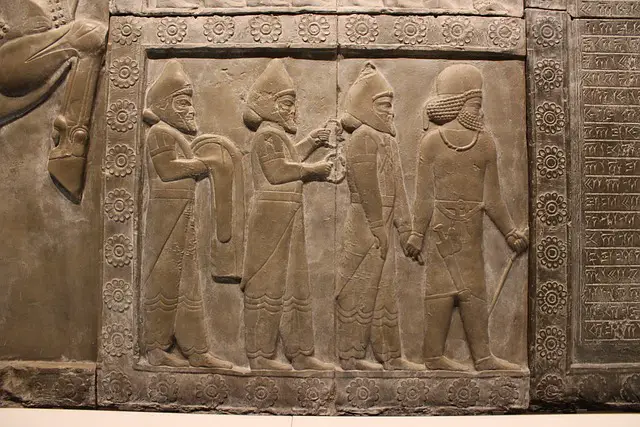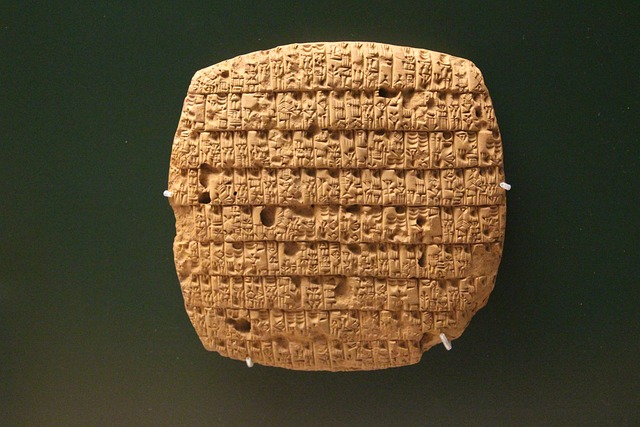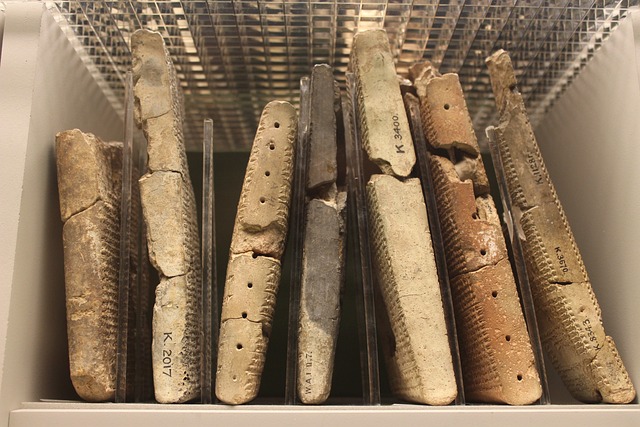
The ancient civilization of Sumer, which arose in Mesopotamia (modern-day Iraq) around 4500 BCE, holds great significance as one of the earliest recorded human societies.
Their remarkable contributions to agriculture, writing, and urban development have left an enduring legacy.
In this blog post, we will take a captivating journey through the timeline of the Sumerian civilization, unraveling its notable milestones and examining the profound influence of its accomplishments.
Sumerian Civilization Timeline
The Sumerian civilization began around 4500 BCE in the floodplain of Mesopotamia, present-day Iraq.
This period marks the earliest known human settlement in the region and is considered to be one of the world’s oldest civilizations.
- Read also: A Glimpse into Ancient Roman Artifacts
- Read also: The Fascinating of Aztec Mythology
Ubaid Period (c. 4500-4000 BCE)
The Ubaid Period marks the beginning of the Sumerian civilization.
During this time, the first permanent settlements were established in southern Mesopotamia, and the inhabitants began to develop agriculture, pottery, and other crafts.
The Ubaid people built the first known temples, which served as the center of their communities.
Uruk Period (c. 4000-2900 BCE):

The Uruk Period saw the emergence of the first true cities, with Uruk being the most prominent.
The population grew rapidly, and the Sumerians developed a complex social structure, with a ruling class, priests, and skilled laborers.
This period also witnessed the invention of the wheel and the development of the cuneiform writing system, which allowed the Sumerians to record their history, laws, and religious beliefs.
Early Dynastic Period (c. 2900-2334 BCE)
During the Early Dynastic Period, Sumerian city-states began to form alliances and engage in trade, leading to increased prosperity and cultural exchange.
This period saw the construction of monumental architecture, such as the ziggurats, which were massive stepped pyramids dedicated to the gods.
The Sumerians also developed a system of laws, known as the Code of Ur-Nammu, which served as a foundation for later legal codes, including the famous Code of Hammurabi.
Akkadian Empire (c. 2334-2154 BCE):
The Akkadian Empire, founded by Sargon of Akkad, marked the first known empire in human history.
Sargon conquered the Sumerian city-states and united them under his rule, creating a centralized government and a common language.
The Akkadian Empire expanded its influence throughout Mesopotamia and beyond, fostering trade and cultural exchange.
Gutian period (2218-2047 BCE)
The Gutian period followed the collapse of the Akkadian Empire.
The Gutians were mountain people from Iran who invaded southern Mesopotamia and established their rule over the region.
They imposed their own laws and customs on the Sumerians, contributing to a decline in literature, art, and science during this time.
However, upon their departure the Sumerian city-states were able to regain their autonomy and rebuild their civilization, paving the way for new innovations in culture and industry.
Neo-Sumerian Period (c. 2112-2004 BCE):

Following the collapse of the Akkadian Empire and Gutian, the Sumerian civilization experienced a resurgence during the Neo-Sumerian Period.
The city-state of Ur emerged as the dominant power, and its rulers, such as Ur-Nammu and Shulgi, undertook ambitious building projects, including the construction of the Great Ziggurat of Ur.
This period also saw advancements in literature, with the creation of the Epic of Gilgamesh, one of the earliest known works of literature.
Decline and Fall (c. 2004-1750 BCE):
The Sumerian civilization began to decline due to a combination of factors, including internal conflicts, invasions by neighboring peoples, and environmental changes.
The Amorites, a Semitic people from the West, gradually gained control over the Sumerian city-states, leading to the eventual fall of the Sumerian civilization.
- Read also: Mayan Mythology: A Journey through the Ancient Civilization
- Read also: African Mythology: Tales of Gods, Heroes, and Magical Creatures
Conclusion
The Sumerian civilization, with its remarkable achievements in agriculture, writing, and urban planning, laid the foundation for subsequent civilizations in Mesopotamia and beyond.
Its timeline, spanning over two millennia, offers a fascinating glimpse into the evolution of human society and the enduring impact of the Sumerians’ innovations.
As we continue to uncover the secrets of this ancient civilization, we gain a deeper appreciation for the ingenuity and resilience of the human spirit.



